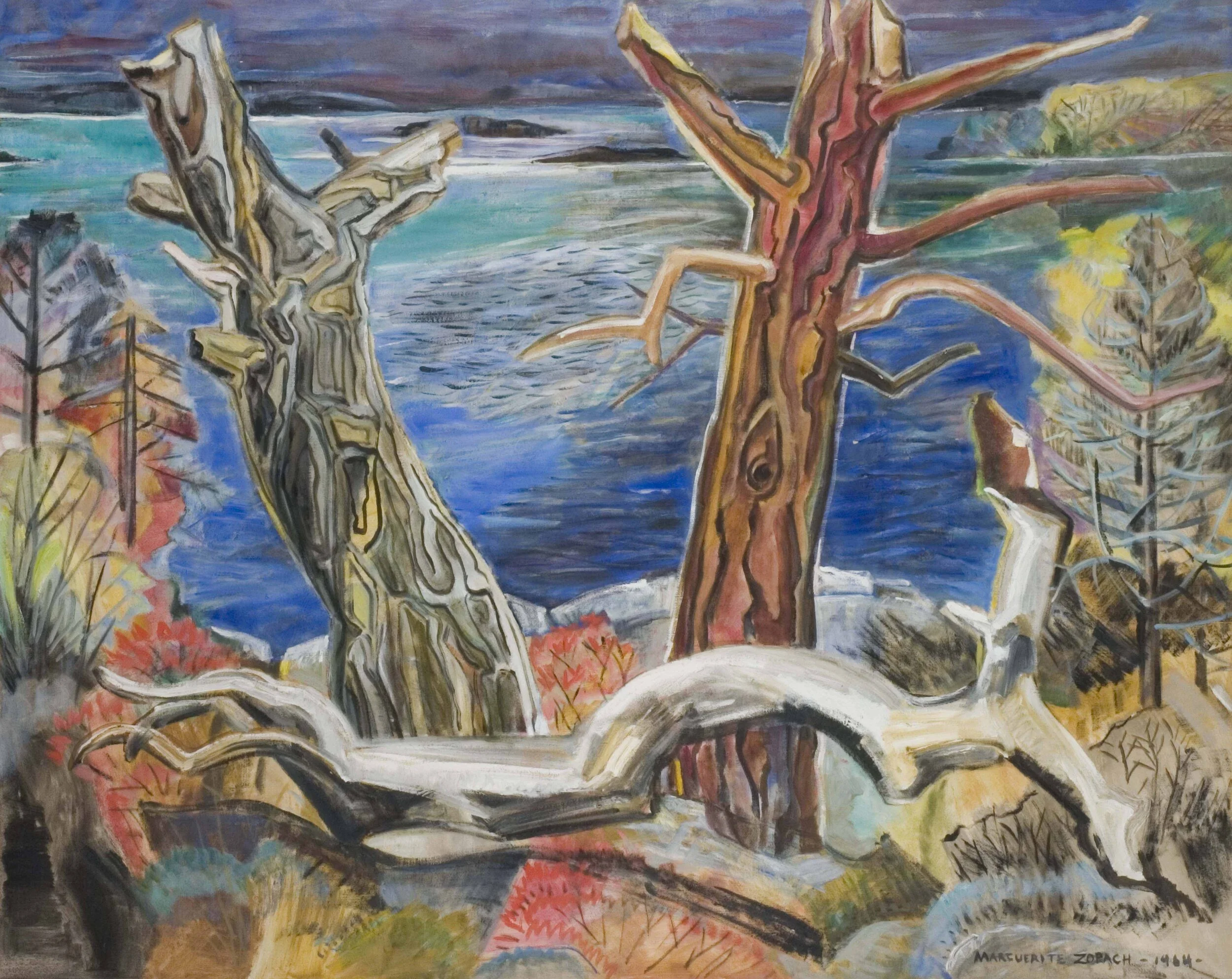
Marguerite Zorach
“...the work of Marguerite Zorach...is an idea of the world we live in, recomposed into a kaleidoscopic pattern of form and color by an extremely sensitive and artistic mind…”
— New York Times, July 10, 1927
Marguerite Thompson Zorach
Two Nudes, 1922
Minneapolis Institute of Art
Marguerite served as first President, New York Society of Women Artists and as Vice President and Director of the Society of Independent Artists.
Born in 1887, Marguerite Thompson grew up in Fresno, in what was then California’s outback, but blossomed when she went to study art in Paris in 1907. It was there she encountered the two big loves of her life, modern art and William Zorach. She studied at the Académie de La Palette, travelled around Europe, and exhibited her artwork at the juried Salon d’Automne, a venue for avant grade art. Alarmed at her interest in William, younger than her and a poor, Jewish immigrant, her aunt took her home on a long trip home through the Middle and Far East in hopes of breaking their bond. When Marguerite finally returned to the United States, she defied her parents by marrying William and pursuing her career as an artist.
She participated in the seminal Armory Show of 1913, where her work received notice and was dismissed as too radical by the narrow-minded reviewers of the time. She was the only woman exhibitor in the important and much more selective 1916 Forum Exhibition of Modern American Painters. Both because of practical concerns (her painting being more difficult to pursue because of the interruptions of two young children) and because of her love of the colors of yarn and the pattern of the stitches, she began to “paint” using embroidery. This was a significant innovation. The enthusiastic response of patrons led to her being the financial support of her family for years. In her painting she developed a personal style utilizing complex color, texture, and patterns to focus on what she found beautiful around her in her everyday life: her family, her pets, her friends, the activities she saw taking place around her, and her natural surroundings. She had an eye for detail and for what others often overlooked. Her mature paintings contain references to earlier, European antecedents and to Cubism and Fauvism, but she continued to assimilate new elements of style or content into her work. These included American folk art, Regionalism, and Abstract Expressionism. Her paintings are often witty or satirical, deeply responsive to the social issues of the day, and reflect her keen observations about the lives of women. They often have an expressionistic aspect. To a remarkable degree as well, she imbued almost every area of her life with her aesthetic sensibilities, including her hand-made and personally designed dresses, her cooking, her home furnishings, her captivating flower beds (a riot of colors, shapes, and fragrances), and the landscape of her home in Maine.
Marguerite died in New York in 1968.
“My greatest ability lies in the awareness and use of relationship of form, vision and imagination... I have a sensitive appreciation and ability to handle color. I feel complete freedom to take any liberties with form and space. You may find the application of my work overpowering; it is never too much for me. I want it that way. It is my pleasure and excitement to fill every space with interest and intricate weaving and design. Without this interest I would never do embroideries.”
Marguerite Zorach
"Death of a Miner", 1930-34, oil on canvas
"The Ghostly Desert", oil on canvas
"Sawing the Logs", 1940, oil on canvas
(Acquired by a private collector - February 2021)
"Salt Marshes in Autumn", 1960, oil on canvas
"Nephew John", 1912, watercolor and pencil
"Vigil", 1930, oil on canvas
"Shore in Autumn", 1964, oil on canvas
"Aunt Mary Eliza", 1955, oil on canvas
"Frozen Marshes at Dawn", 1950, oil on canvas









